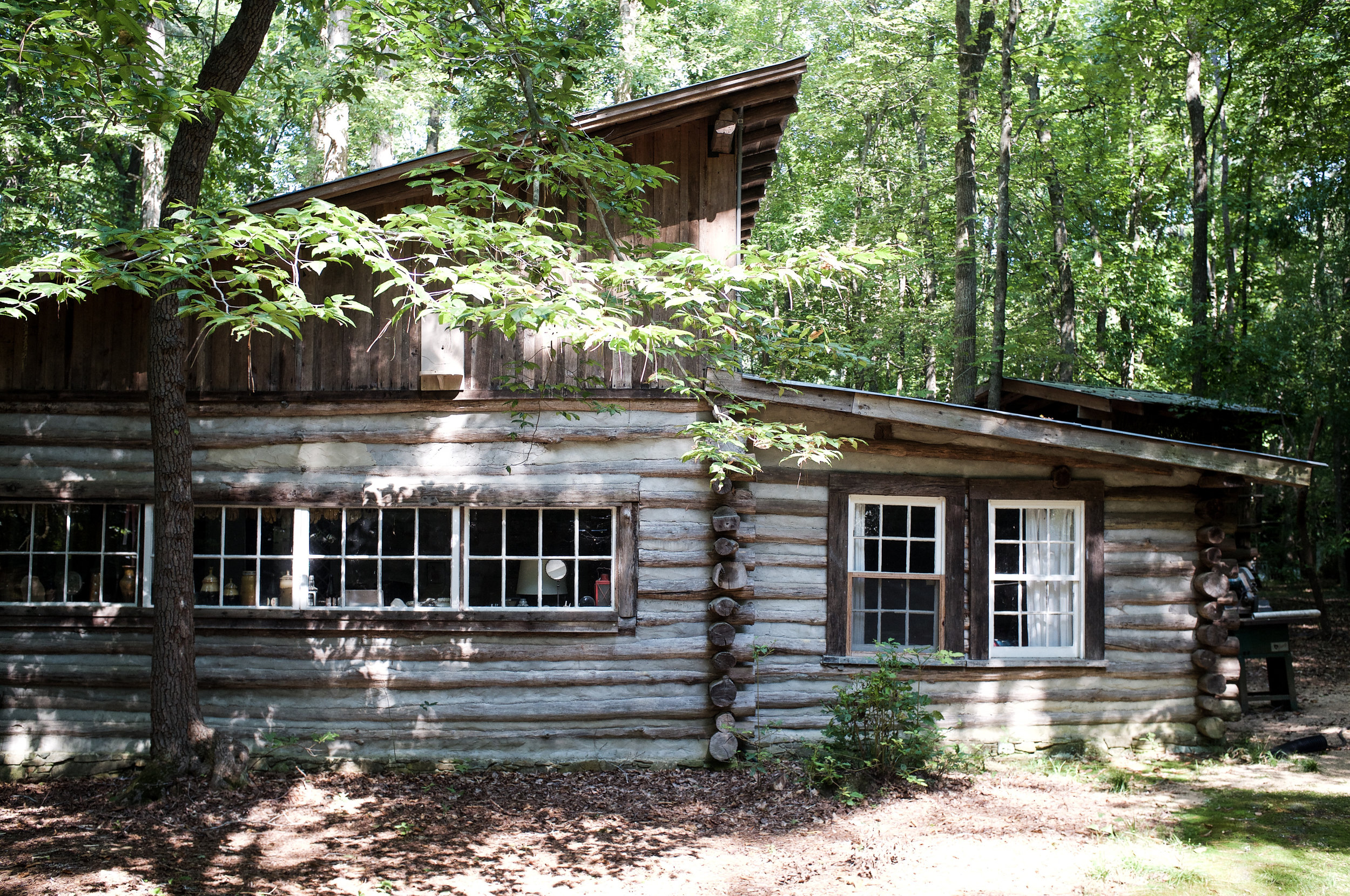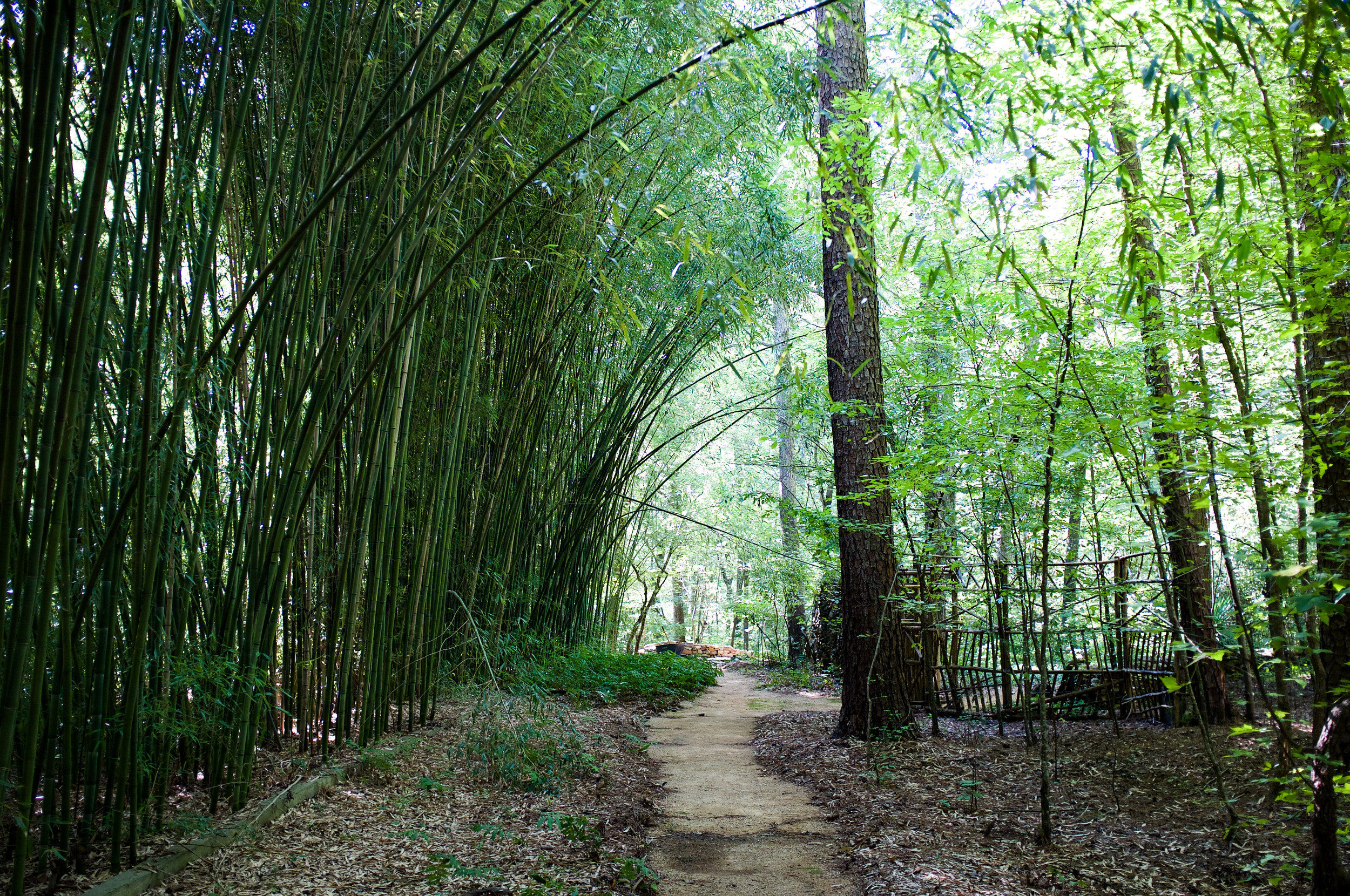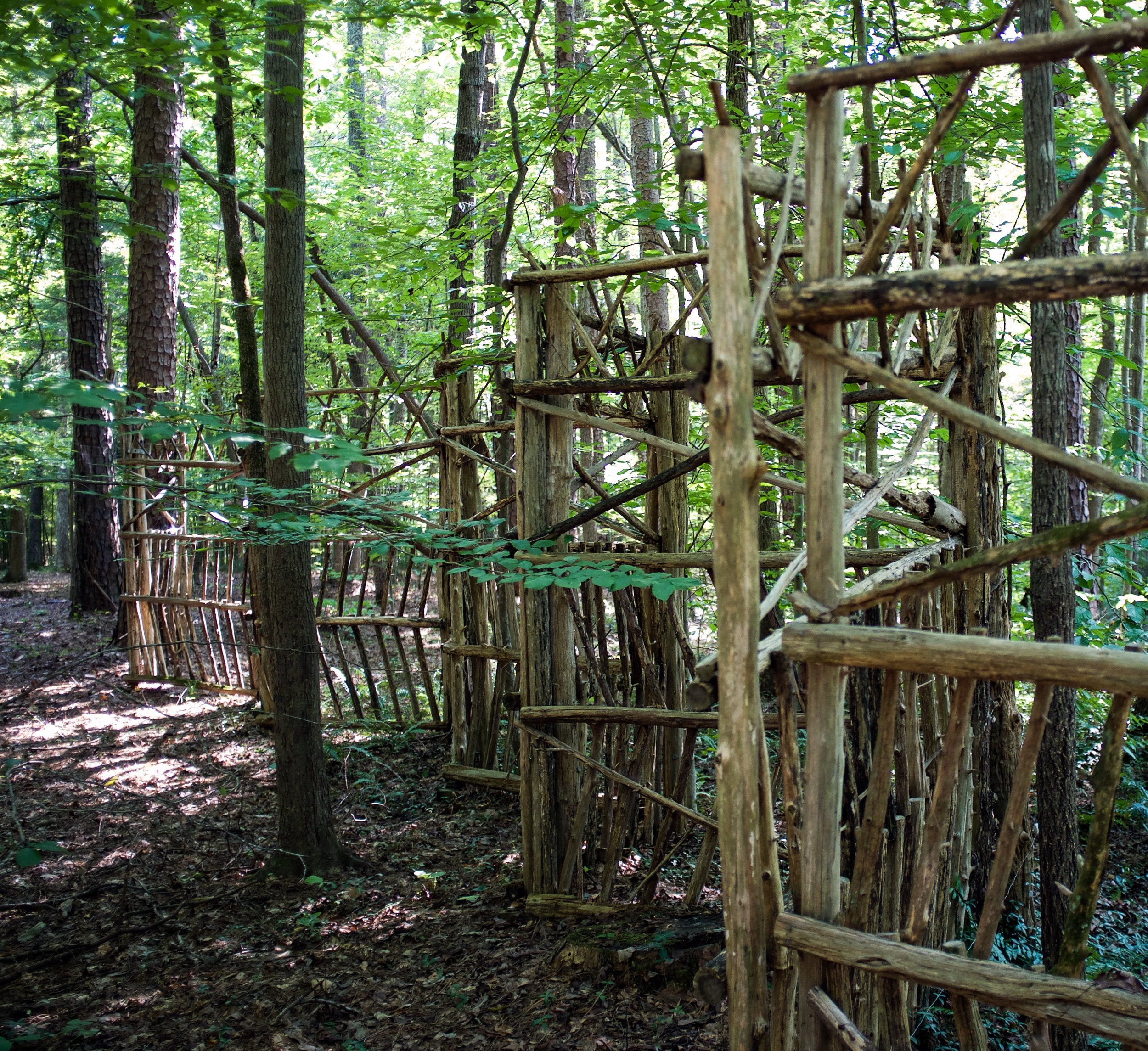PATRICK DOUGHERTY

Into the Woods, an afternoon with Patrick Dougherty
by Addie Chapin
“I’m like a snail with the studio on my back.” This is how Patrick Dougherty, sometimes known as the Stickman, describes himself. You’ve likely seen those wild and complex sapling sculptures he is known for. They look indigenous, like earth-born cocoons rising from the subterranean. They are larger than life, perhaps home to a larger than life creature that we don’t yet know exists. However you describe it, this much is true: once you’ve seen his work, it’s impossible to forget.
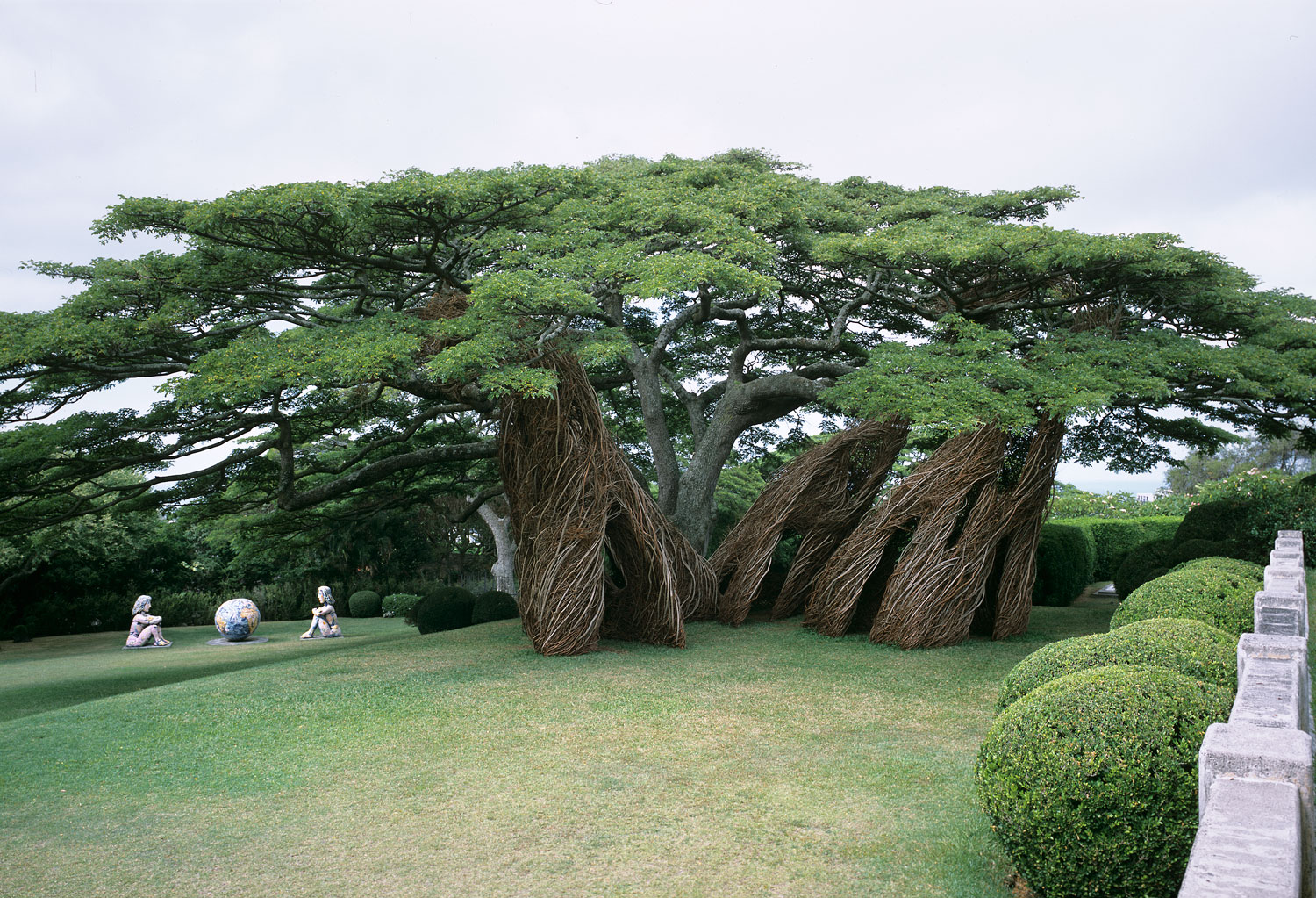

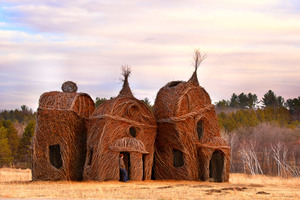

Dougherty takes on ten installations a year. Thus, the Stickman is rarely found at home—which is located just off a small two lane highway on the outskirts of Chapel Hill. Instead, he is out in the world (all over it, really) except for a few weeks out of the year. As luck would have it, I happened to be passing through at the end of the summer, during the rare occasion that Dougherty was in residence. He graciously welcomed me to his workshop in the woods one very hot Sunday afternoon. Traveling slowly down the dirt drive, I came upon a tall woven fence, a cluster of outbuildings, then a small cabin, and over there, a lean-to barn. As a harbinger of all good things to come, I was greeted at the gate by one of those dogs that seem to smile. His name was Dusty.
At first glance, Patrick Dougherty’s homeplace appeared to be a simple shelter built from the surrounding trees with a primitive and pure construction. Almost as if it simply fell together one day by pure happenstance. Or some kind of natural phenomenon, straight out of Oz. And yet upon closer observation, there was an incredible level of sophistication and complexity to this assemblage of structures. Every single beam had been crafted by hand, his hands. When I asked how’d he gotten way out here in the woods off Dodson’s Crossroads, he responded quite matter-of-factly. He bought the property with nothing on it. He’d never built a house before either. But he had an almanac, an ax, and went to work. First, he built a one room cabin. That was 1975. He added on, and added on. It sounded like a classic make-do, but there was such artistry in his composition, the layout of the land, the organization of materials; it was truly exciting to witness the evidence of a first-pass attempt at construction. It had endured like any other great piece of architecture, exposed and proudly aged by the elements, a testament to having fulfilled it responsibility of providing a safe haven and shelter.
Not unlike his home, Dougherty’s sculptures are composed in much the same way. He gets out there with his bare hands—and a good pair of gloves. He possesses a great respect and commitment to the environment. What Dougherty does is an act of honest and sheer will; one that requires an understanding of and yielding to the Nature-imposed boundaries of a given place. And somehow still, he pushes back against the limitations of the land to create something one could only dream up in the imagination. That’s the transformative power of art. It’s both/and. The magic lies within that very tension.
It takes him three weeks to complete a work onsite. First, saplings are brought in by the truckload. Dougherty has real opinions, as one should, about the best kind of sticks for the job. An artist, or any tradesperson for that matter, inevitably develops a keen and acute sense for the materials with which he or she works. In his case, a sapling must possess the perfect degree of flexibility, bendability, young, maybe grown by the water or beneath more mature tree cover. A good sapling maintains the ability to be formed. Formed by the Stickman, no less. He does all the planning and execution on site with the aid of a small team and a host of eager volunteers. The kicker for me is the public nature of it all. Everything happens right out in the open, his working, fitting together, weaving, thinking, reworking. I wouldn’t call it a performance, but it certainly draws a crowd. To watch something so grand and surreal being formed out of nothing, well, it’s practically biblical. Biblical enough to cause some rubber-necking and ogling bystanders. To encounter the process, I imagine, is as much a spectacle as the finished work itself. Is it ever finished? You see, the nature of the Stickman’s work is that it is totally temporal. There is no promise of his creation living forever. In fact, he’ll tell you three good years is about all you can expect to get out of them. After that, it’ll slowly start to decompose. It’s natural, sure, a function of gravity and time; but can you imagine if this were the case for your life’s work? The work of an architect? A painter? A builder? A craftsman? To spend weeks, hours, day and night, composing a thing you knew was going to fall apart at the end? The birds know. The animals of the field, they know this too. And Patrick Dougherty knows and remains unbothered. The Stickman, steadfast and true, is already on the move, in pursuit of a fantastical vision, a nest not yet seen.
I. The Cabin
II. The Workshop
III. The Studio
IV. The Environment
Born in Oklahoma in 1945, Dougherty was raised in North Carolina. He earned a B.A. in English from the University of North Carolina in 1967 and an M.A. in Hospital and Health Administration from the University of Iowa in 1969. Later, he returned to the University of North Carolina to study art history and sculpture.
Combining his carpentry skills with his love of nature, Patrick began to learn more about primitive techniques of building and to experiment with tree saplings as construction material. In 1982 his first work, Maple Body Wrap, was included in the North Carolina Biennial Artists’ Exhibition, sponsored by the North Carolina Museum of Art. In the following year, he had his first one-person show entitled, Waitin’ It Out in Maple at the Southeastern Center for Contemporary Art in Winston-Salem, North Carolina.
His work quickly evolved from single pieces on conventional pedestals to monumental scale environmental works, which required saplings by the truckloads. Over the last thirty years, he has built over 250 of these works, and become internationally acclaimed. His sculpture has been seen worldwide---from Scotland to Japan to Brussels, and all over the United States.
He has received numerous awards, including the 2011 Factor Prize for Southern Art, North Carolina Artist Fellowship Award, Pollock-Krasner Foundation Grant, Henry Moore Foundation Fellowship, Japan-US Creative Arts Fellowship, and National Endowment for the Arts Fellowship. Princeton Architectural Press published a major book about Patrick and his work in 2009. This monograph, Stickwork, has received excellent reviews and is available at www.stickwork.net.
Additional reading:
https://www.theatlantic.com/business/archive/2017/09/mentoring-like-an-artist/541245/
https://www.nytimes.com/2010/10/07/garden/07twig.html
PBS “Nature” episode; Craft in America featuring Patrick Dougherty:
https://www.youtube.com/watch?time_continue=45&v=Q1gb-XqKLX4















